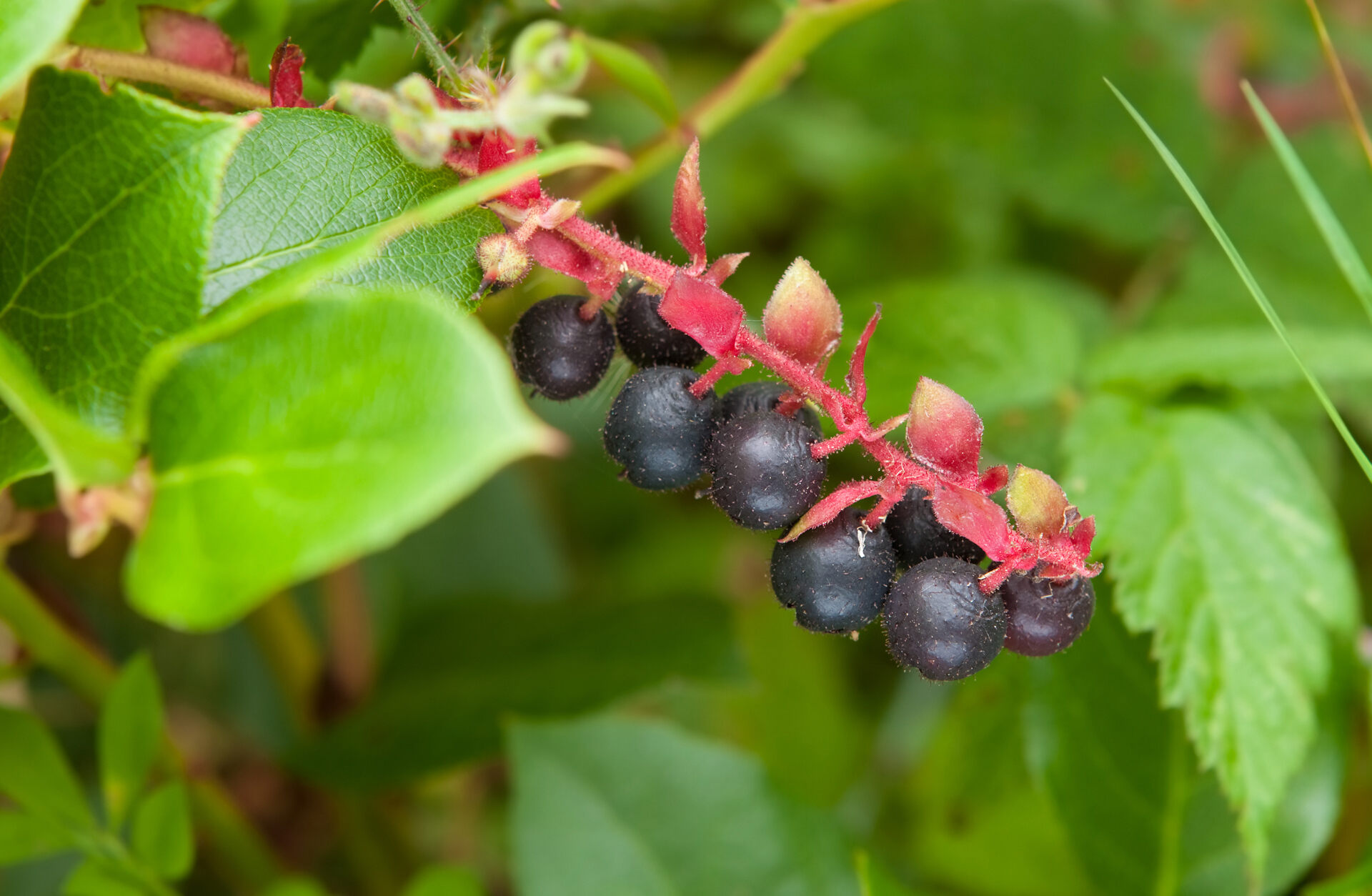
Salal berries might not be as famous as blueberries or strawberries, but they pack a punch in both flavor and nutrition. Found mainly in the Pacific Northwest, these small, dark purple berries grow on evergreen shrubs and have been a staple for Native American tribes for centuries. Salal berries are rich in antioxidants, vitamins, and fiber, making them a healthy addition to any diet. They can be eaten fresh, dried, or used in jams and desserts. Their unique taste, a mix of sweet and slightly tart, makes them a versatile ingredient in various recipes. Curious about more? Here are 26 fascinating facts about Salal berries that will make you appreciate this underrated fruit even more.
What is Salal Berry?
Salal berries are small, dark purple fruits native to the Pacific Northwest. These berries grow on the salal plant, which is a hardy, evergreen shrub. Known for their sweet and slightly tart flavor, salal berries have been a staple in the diets of Indigenous peoples for centuries.
-
Salal berries are native to North America. They thrive in the coastal regions of the Pacific Northwest, from Alaska to California.
-
The scientific name for the salal plant is Gaultheria shallon. This plant belongs to the Ericaceae family, which also includes blueberries and cranberries.
-
Salal berries have a unique taste. Their flavor is a mix of sweet and tart, often compared to blueberries with a hint of spice.
-
Indigenous peoples have used salal berries for centuries. These berries were traditionally dried and pressed into cakes for winter storage.
-
Salal berries are rich in antioxidants. These compounds help protect the body from damage caused by free radicals.
Nutritional Benefits of Salal Berries
Salal berries are not just tasty; they are also packed with nutrients. Let's explore some of the health benefits these berries offer.
-
Salal berries are high in vitamin C. This vitamin is essential for a healthy immune system and skin health.
-
They contain dietary fiber. Fiber aids in digestion and helps maintain a healthy gut.
-
Salal berries are low in calories. This makes them a great snack for those watching their weight.
-
They have anti-inflammatory properties. These properties can help reduce inflammation in the body, potentially lowering the risk of chronic diseases.
-
Salal berries are a good source of manganese. This mineral is important for bone health and metabolism.
Uses of Salal Berries
Salal berries are versatile and can be used in various culinary applications. Here are some popular ways to enjoy these berries.
-
Salal berries can be eaten fresh. Simply pick them off the bush and enjoy their natural sweetness.
-
They make excellent jams and jellies. The berries' natural pectin content helps these preserves set nicely.
-
Salal berries can be dried. Dried berries can be added to trail mixes or used in baking.
-
They are great in baked goods. Use salal berries in muffins, pies, and cakes for a unique twist.
-
Salal berries can be made into wine. Their rich flavor makes for a delicious and unique homemade wine.
Growing Salal Berries
Interested in growing your own salal berries? Here are some tips to get started.
-
Salal plants prefer shady areas. They thrive under the canopy of larger trees.
-
They are drought-tolerant. Once established, salal plants require minimal watering.
-
Salal plants can be grown from seeds or cuttings. Both methods are effective for propagation.
-
They are low-maintenance. Salal plants require little pruning and are resistant to pests and diseases.
-
Salal plants can be used as ground cover. Their dense foliage helps prevent soil erosion.
Interesting Facts About Salal Berries
Here are some fun and lesser-known facts about salal berries that might surprise you.
-
Salal berries were used as a natural dye. Indigenous peoples used the berries to dye fabrics and baskets.
-
The leaves of the salal plant are also useful. They are often used in floral arrangements due to their glossy appearance.
-
Salal berries have a long shelf life. When dried, they can be stored for months without spoiling.
-
Wildlife loves salal berries. Birds, bears, and other animals often feed on these berries.
-
Salal berries can be used in savory dishes. They pair well with meats and can be used in sauces and marinades.
-
The salal plant is named after a Scottish botanist. Archibald Menzies, who first documented the plant in the late 18th century.
The Final Bite on Salal Berries
Salal berries are more than just a tasty treat. These little gems pack a punch with their nutritional benefits and historical significance. From being a staple in indigenous diets to their use in modern cuisine, salal berries have proven their worth. They’re rich in antioxidants, vitamins, and fiber, making them a great addition to any diet. Plus, their versatility means you can enjoy them in various forms, whether fresh, dried, or as part of a recipe.
Next time you’re out foraging or at a local market, keep an eye out for these nutritious berries. They’re not just good for you; they’re a piece of nature’s history you can savor. So, go ahead, give salal berries a try, and enjoy all the benefits they bring to the table. Happy eating!
Was this page helpful?
Our commitment to delivering trustworthy and engaging content is at the heart of what we do. Each fact on our site is contributed by real users like you, bringing a wealth of diverse insights and information. To ensure the highest standards of accuracy and reliability, our dedicated editors meticulously review each submission. This process guarantees that the facts we share are not only fascinating but also credible. Trust in our commitment to quality and authenticity as you explore and learn with us.
